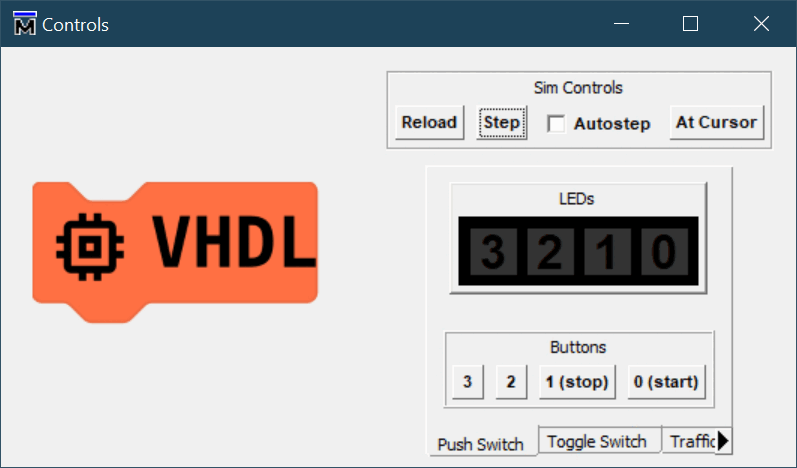Scratch VHDL
The purpose of "Scratch VHDL" is to make reprogrammable logic design into child's play. Sounds ambitious.
Dimmer Control
Consider a room light dimmer control that can be incremented and decremented in brightness of the main light. This is a digital version of the classic analogue dimmer that you rotate.

Choose two buttons for up and down functions to manually advance through states. This example has two immediately obvious implementations.
- Use an integer counter in the range 0 to 4 and add or subtract 1 for each change. Make sure the actions on values of 0 and 4 are constrained.
- Use a state machine like the following to explicitly enumerate each state.
stateDiagram-v2
[*] --> 0
0 --> 1 : up = '1' and incr = '1'
1 --> 0 : down = '1' and incr = '1'
1 --> 2 : up = '1' and incr = '1'
2 --> 1 : down = '1' and incr = '1'
2 --> 3 : up = '1' and incr = '1'
3 --> 2 : down = '1' and incr = '1'
3 --> 4 : up = '1' and incr = '1'
4 --> 3 : down = '1' and incr = '1'
Now we just need to add the output assignments, e.g. using a case statement, to decode the state (integer) value to a 4-bit vector assignment to leds(3:0).
| state | leds(3:0) |
|---|---|
| 0 | “0000” |
| 1 | “1000” |
| 2 | “1100” |
| 3 | “1110” |
| 4 | “1111” |
Non-Finite State Machine
An implementation using a two-way shift register. The FSM implementation is perhaps more descriptive and hence easier to understand.